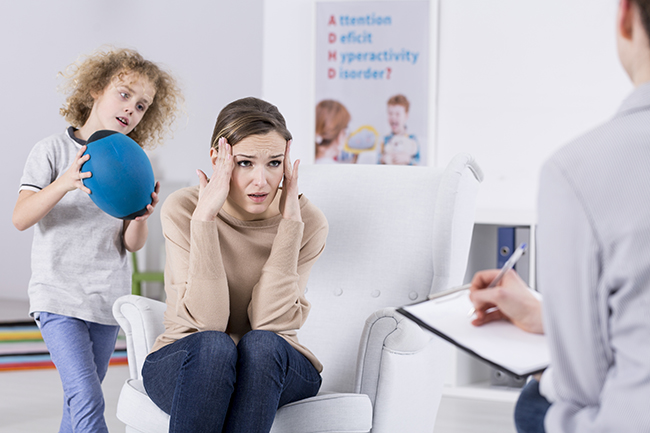Even in our modern age, inequality still exists in the healthcare system. These inequalities are especially true for women who receive or are seeking an ADHD diagnosis. Proof point: diagnosis rates among American men are nearly 69% higher than women.
Since symptoms commonly appear different in males than females, girls and women seeking a diagnosis are often misdiagnosed with depression and anxiety, hindering them from receiving the proper treatment. Most women tend to present inattentive ADHD symptoms – time management issues, disorganization or the inability to focus or pay attention to detail – as opposed to “classic” hyperactivity.
ADHD falls along with very similar co-morbid conditions. Many people with ADHD are likely to have anxiety and depression, bi-polar disorder, binge eating disorder, OCD, and other mental illnesses.
“Young boys get diagnosed early because it always comes down to if they’re failing in their social and emotional development, or they’re a behavioral problem in the classroom,” said Dr. Jennifer Sanderford, a pediatrician with Crested Butte Pediatrics. “Girls don’t exhibit as many of the social signs, though there is a disconnect – the most common for girls with ADHD is moving from peer group to peer group. For girls, recognition of symptoms tends to appear in late elementary to middle school when they’re insightful enough to recognize their differences from peers.”
When it comes to prescription treatment for ADHD, there are special considerations to take into account with females. Women tend to learn coping skills throughout their life and don’t realize the effects until much later. For instance, you don’t know you’re sensitive to four screaming children until you have four screaming children. You don’t know that you’re overwhelmed until the tasks and responsibilities seem to “pile up.” When they lack the right coping mechanism and treatment, women experience extra struggles and often engage in negative self-talk because they feel different or like a failure. The earlier girls can get diagnosed, and if we can help them when they’re younger, we can change their lives as adults
Today, women are typically getting diagnosed in their 30’s and 40’s, many times when their children are diagnosed or they’ve reached a point in their lives where they’re better able to identify their struggles or symptoms. There’s also increasing recognition of their symptoms as indicators of ADHD as a result of the disruptions caused by the pandemic.
As a clinician, we have found that women are greatly underdiagnosed, and it’s been a struggle to find people to treat and diagnose women in general. I was diagnosed with ADHD at 40 after being misdiagnosed with anxiety and depression for most of my life. My personal struggles to get an accurate diagnosis are one of the main reasons I’m so passionate about ADHD.
Unfortunately, later diagnoses mean that many women fall behind their peers who don’t have ADHD or who receive treatment for it. The result is often more financial hardship, missed professional growth opportunities, a lack of strong social connections and more.
Thankfully, the lack of a diagnosis for women doesn’t have to stay this way.
Technology Has Changed the Game for ADHD Diagnosis
It’s important to raise awareness of these inequalities to ensure women feel empowered to seek additional testing options that may better assess and diagnose ADHD. There is no shame in seeking diagnosis and treatment for ADHD.
New developments in healthcare technology – like Qbtech’s computer-based objective testing that measures core ADHD symptoms – have not only made it easier for women to be diagnosed, but it shows personalized test results to help them understand how their diagnosis compares to other women their age without ADHD.
“These technology-driven tests accurately measures core ADHD symptoms and incorporates the data to inform ADHD diagnosis and treatment. They also help sort out common co-morbidities, such as ADHD and anxiety. Another important use is for monitoring and managing treatment to determine if the medication is effective or needs to be adjusted,” Dr. Sanderford added.
For women out there who are reading this and recognizing these symptoms in themselves, it’s never too late to seek diagnosis and treatment. Through advances in technology, getting care for undiagnosed ADHD is now more accessible than ever and can help women to close the gap.
Amy Quinn, MPH, MPAS, PA-C
Amy Quinn earned her Master of Physician Assistant Studies (MPAS) degree from The University of North Dakota before opening her own private practice in Wichita, Kansas. She is an Officer in the Kansas National Guard with a passion for ADHD services and providing the foundation for life-long health and happiness to all of her patients. Aside from her passion for ADHD services, she also provides expertise in psychiatry, family medicine, and internal medicine.

